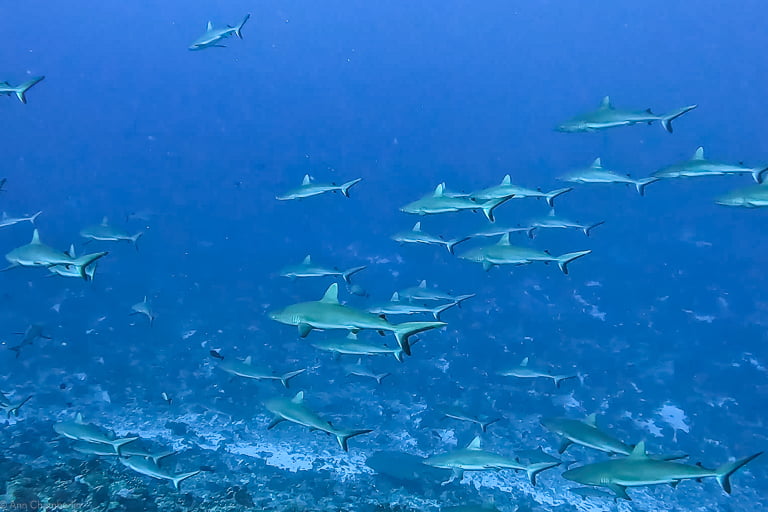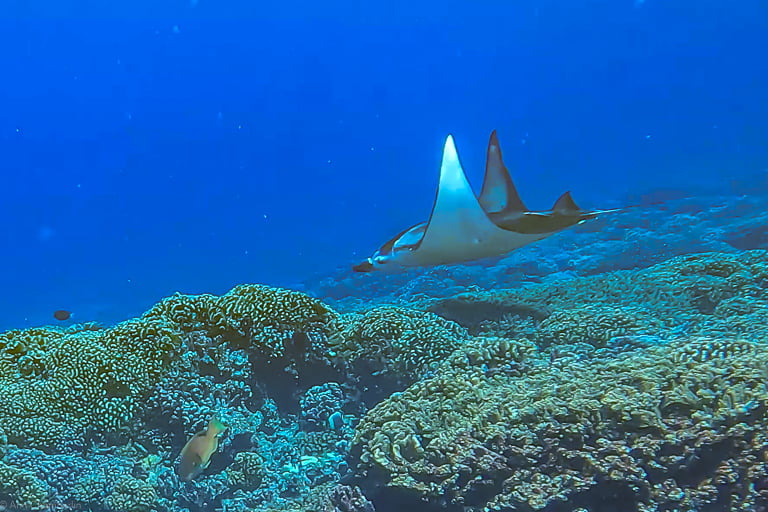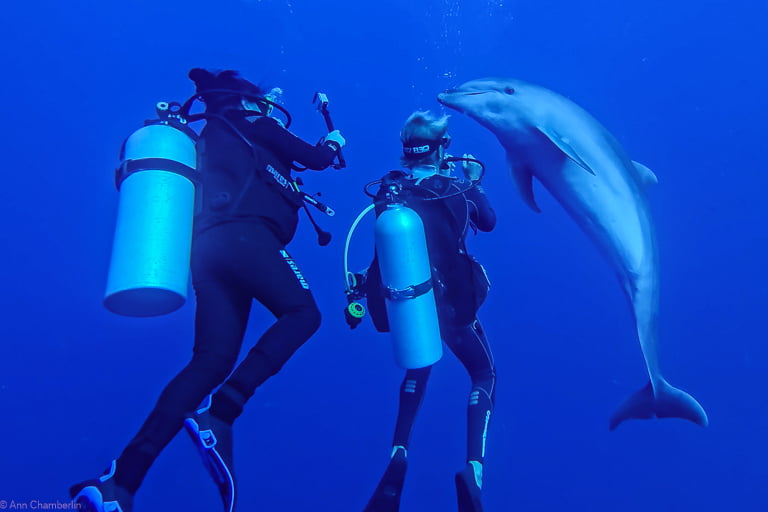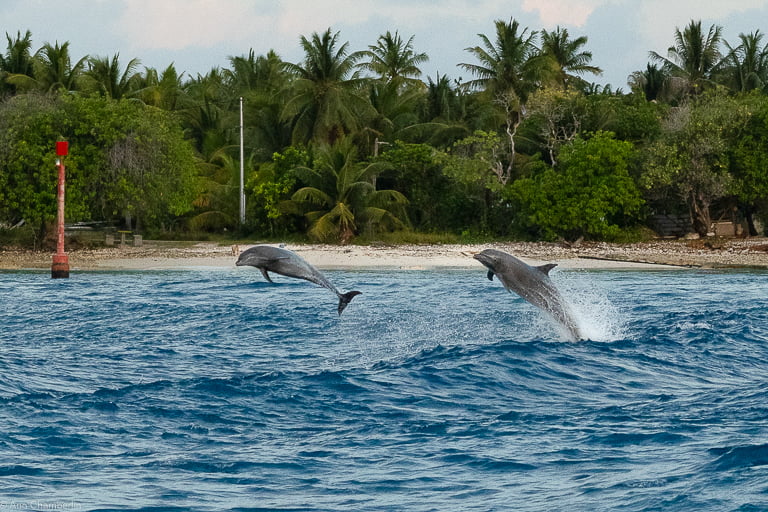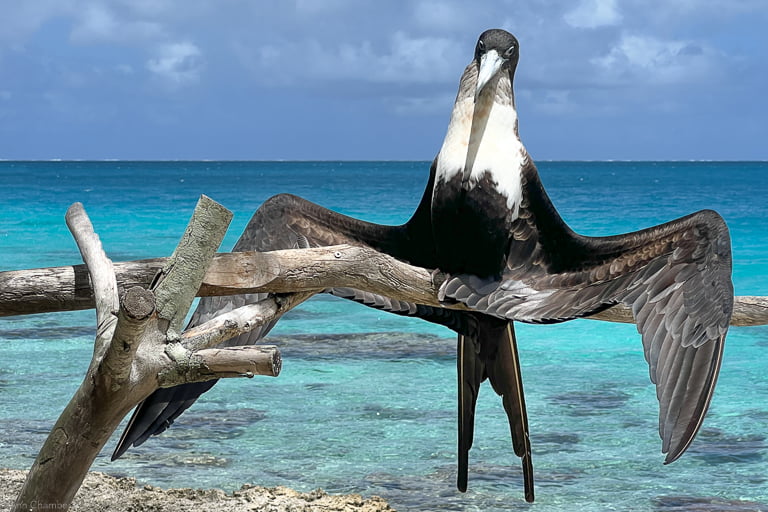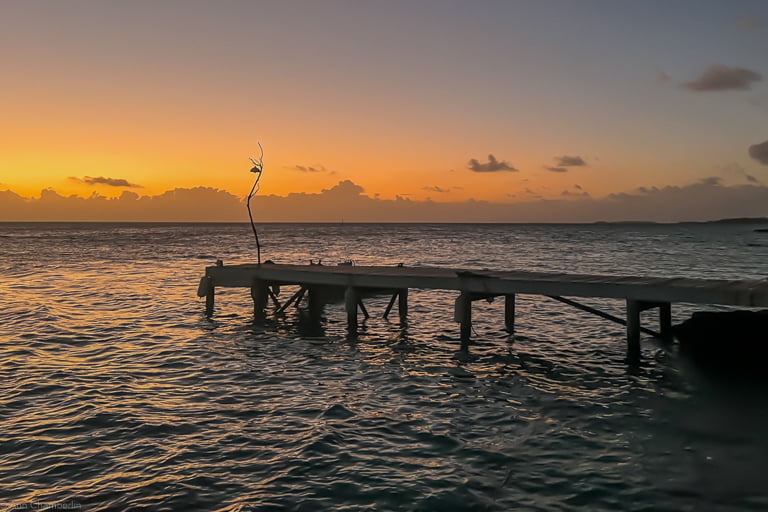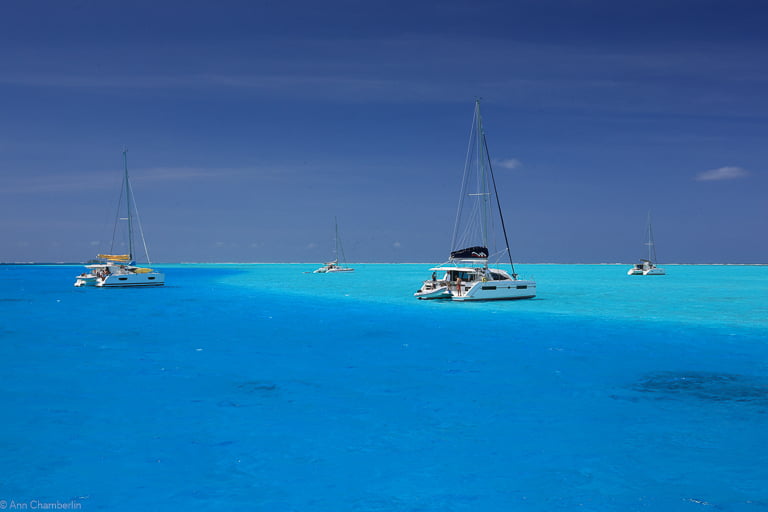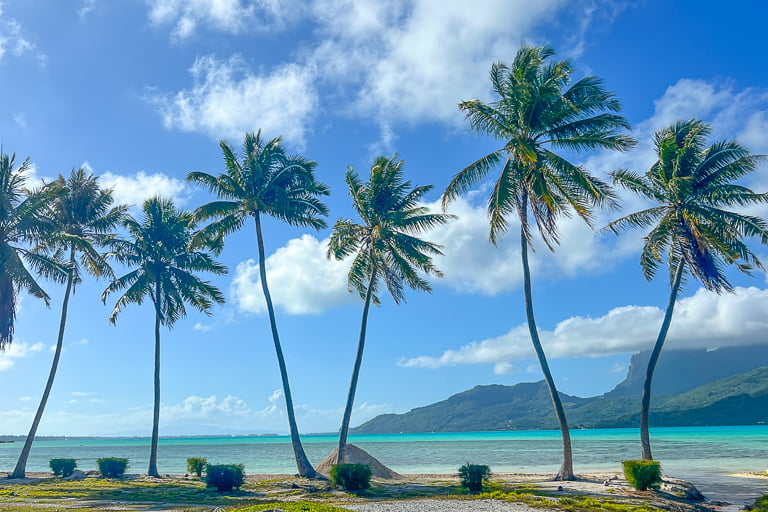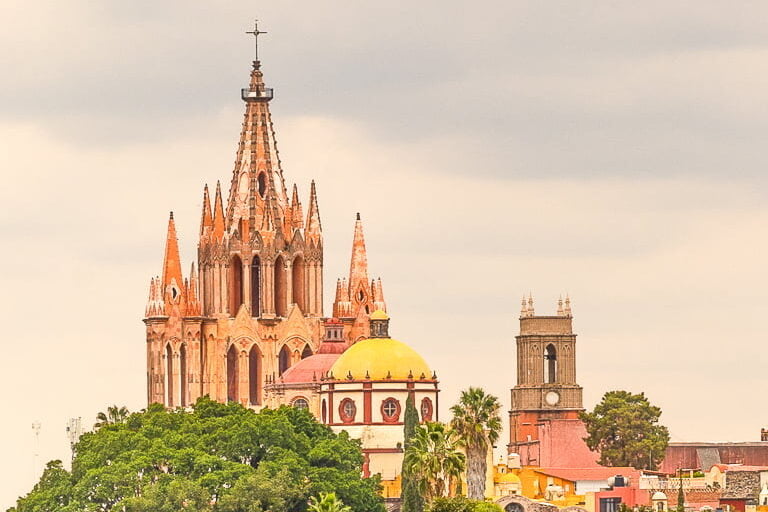The Tuamotu Archipelago is the largest chain of atolls in the world. There are 76 islands over an area about the size of Western Europe. And yet, there are only 16,000 inhabitants in a land area of only 328 square miles (a bit less than the city of San Diego.)
We visited two of these islands, Rangiroa and Fakarava. Rangiroa is the largest island and most populous, with around 2,500 inhabitants. It is nearly 50 miles across, but only about 500 feet wide at its widest. This narrow strip of land separates the lagoon within from the open ocean. Nearly every atoll has one or more gaps in the coral ring, because when water gets into the lagoon, it needs a way to get out. These narrow passes typically have strong currents and rough waves. But they are also what makes the Tuamotus a must-see for divers.
Rangiroa
The extremely strong currents in the passes create an abundant food supply, which then attracts lots of fish. This in turn attracts lots of big predators, like sharks, dolphins and rays. In Rangiroa, we saw lots of fish, sharks and rays while diving the Tiputa Pass.
But the real attraction here is the dolphins. We always saw many of these intelligent and curious animals on our dives. Accustomed to human interactions, they were very playful and would occasionally stop inches away from your face for a longer look.
In the pass’ strong currents, the dolphins put on quite a show. We watched them perform their acrobatics every evening while enjoying our sunset cocktail from a ringside seat at Josephine’s Bar.
Fakarava
Fakarava is nearly as big as Rangiroa, but has only 800 people living there. At the south end, where we we stayed for its fabled diving, the nearest market or general store is a 2-hour boat ride away. Our lovely hotel, Pension Raimiti, gets re-supplied once a month by ship, but otherwise they’re completely self-sufficient.
In Fakarava, it’s all about the sharks. The South Pass is said to have the highest concentration of sharks anywhere in the world. After entering the water at one end of the pass, we descended to 80 feet and were met by the largest group of sharks I’ve ever encountered. Swimming upstream at the same speed as the current, they appeared to be hovering in place while we floated by. We were completely surrounded by hundreds of sharks. Not to worry, though. Sharks are night feeders, so these sharks were completely chill. It was an unforgettable experience!
Back on land, our time was spent mainly just enjoying the warm breezes, beautiful scenery and laid back friendliness of the locals. Far from the main tourist areas of French Polynesia, The Tuamotus are all about escaping to a simpler place and time.
For a more in-depth look at what to see and do, where to stay and eat, etc., please visit the French Polynesia Destination Page
The underwater photos were provided to us by other divers. They are used here with their permission.

